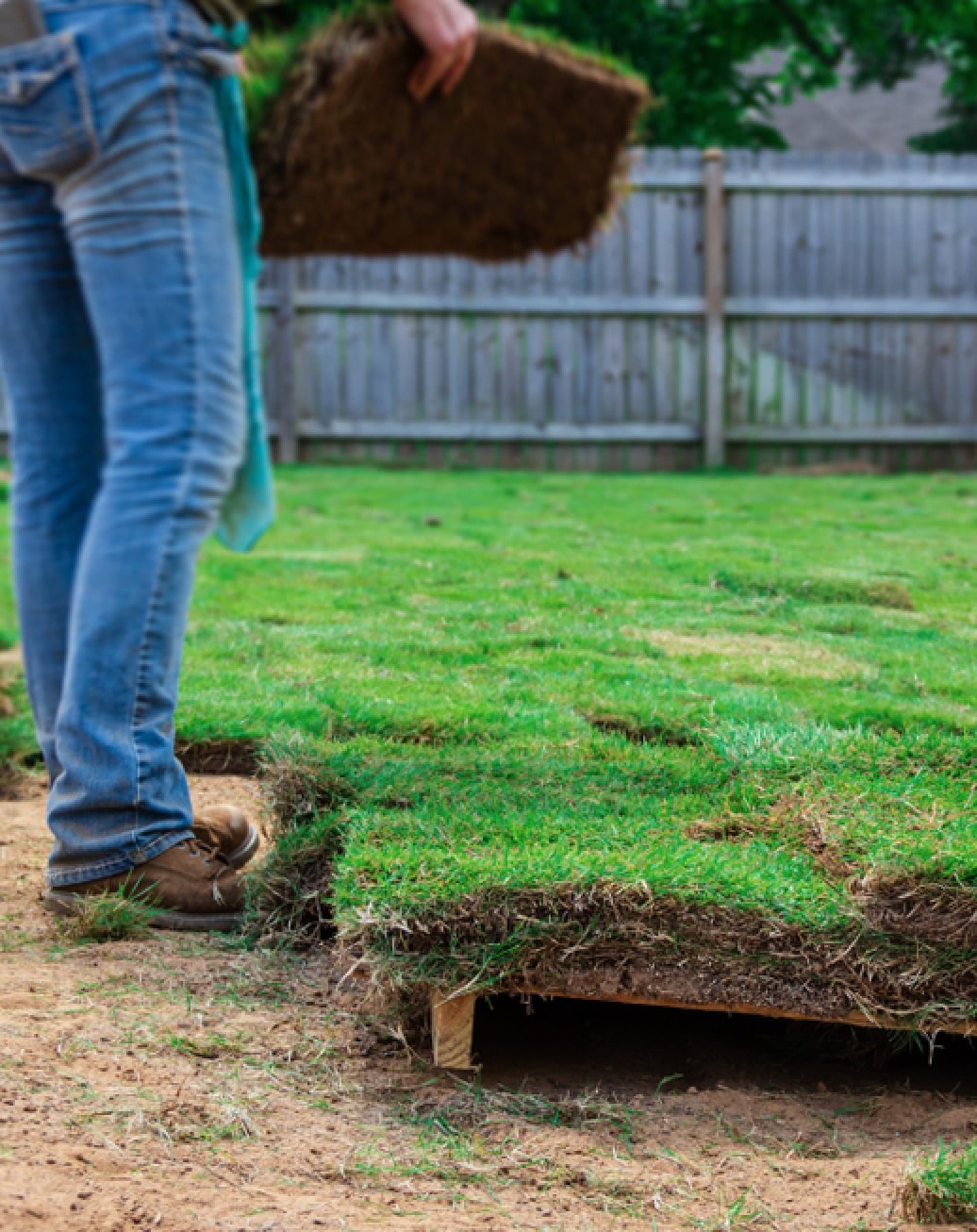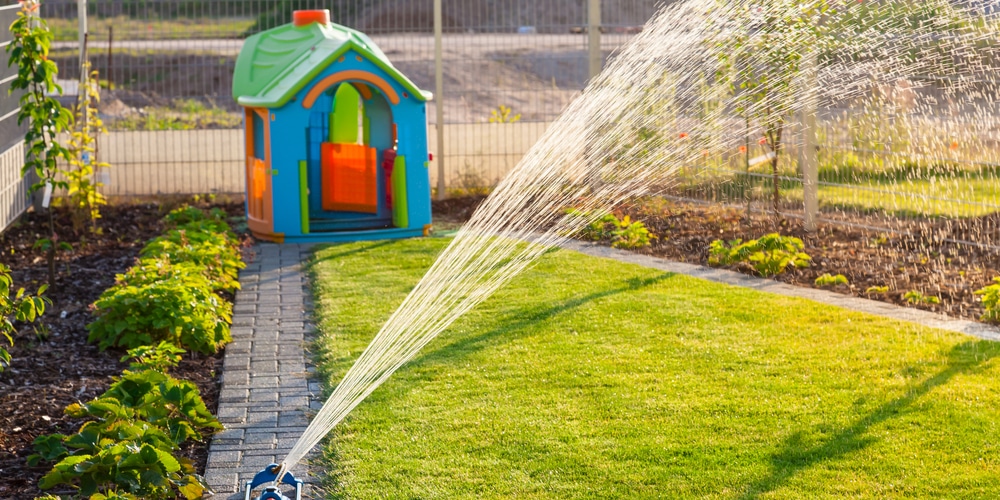Planting new sod and cultivating a lush green lawn requires an investment of both time and money. A nice yard can improve your home’s exterior and your family’s life.
Laying new sod will instantly transform your yard’s landscaping. After the sod is laid, you’ll need to look after it correctly to ensure it becomes well-established. New sod should be watered regularly. Let’s look at how often to water new sod.
Sod Grass Watering Schedule for the First Year
Initial Establishment Phase (Week 1-4)
| Time Frame | Watering Frequency | Watering Depth |
|---|---|---|
| Day 1-7 | Twice daily (morning and evening) | About 4-6 inches (check soil moisture depth) |
| Week 2-4 | Once daily | 6-8 inches (encourage deeper root growth) |
Maintenance Phase (Month 2-12)
| Time Frame | Watering Frequency | Watering Depth |
|---|---|---|
| Month 2-6 | 2-3 times per week | 6-8 inches (to support deeper root establishment) |
| Month 7-12 | Once a week (adjust based on weather conditions) | 8-10 inches (promote drought tolerance) |
- Note 1: These guidelines are general; local climate and weather conditions should be considered.
- Note 2: In hot, dry periods, additional watering may be necessary to prevent sod from drying out.
- Note 3: After the first year, transition to a regular watering schedule based on grass type and local climate.
Some Sod Types Needs More Water Than Others
All sod types do not need the same amount of water. The amount of water required can vary significantly depending on the type of grass, climate, soil type, and time of year. Here’s a brief overview:
- Cool-season grasses (e.g., Kentucky bluegrass, fescue, and ryegrass) typically require more water in the spring and fall when they are actively growing. During the summer, they might need more frequent watering to remain green and healthy, especially in hotter climates.
- Warm-season grasses (e.g., Bermuda, zoysia, St. Augustine, and centipede grass) generally need more water in the summer during their peak growing season. They are more tolerant of heat and drought, requiring less water than cool-season grasses in equivalent conditions.
- Soil type also plays a crucial role in water needs. Sandy soils drain quickly and may require more frequent watering but in smaller amounts, while clay soils retain water longer and may need less frequent but deeper watering.
- Climate affects watering needs as well. Areas with high temperatures and low rainfall will see increased watering needs, while cooler, wetter climates may require less supplemental watering.
It’s important to research the specific needs of your sod type and adjust your watering schedule based on local weather conditions, the season, and the appearance of your lawn.
Tips for Watering New Sod
When watering your yard, you should ensure that the new sod is watered right up to the corners. Sometimes corners can remain dry if the sprinkler doesn’t reach the corners. This can affect growth.
It’s also worth noting that if you have a slope in your yard, the water may run off before the soil and grass have become adequately watered. To ensure that your lawn gets enough water, you can turn off your sprinkler system when you notice runoff; wait for approximately half an hour for the water to soak in and then resume watering. This will help you achieve adequate moisture in the soil.
You may need to give your lawn more water if you live in a very hot or windy climate as these weather conditions cause evaporation and can you’re your lawn dry out. It’s best to water your lawn in the early morning and again in the evening to avoid the hottest part of the day. This will reduce the amount of water that’s evaporated and will stop grass blades from becoming scorched due to moisture on their leaves.
Conclusion
New sod requires enough water to help it establish roots. Ensure that your lawn is kept moist for the first two weeks and then continue to provide water for a month after planting. If you live in a very hot climate, you may like to continue watering your lawn regularly. The best time to water your yard is in the early morning or evening. You should avoid the hottest parts of the day when watering your grass.
Sod also requires it’s own special fertilizer. The fertilizer will need be gentler on it than what’s typically offered. Here are some good fertilizer for sod choices, as well as the best practices for fertilizing it.

